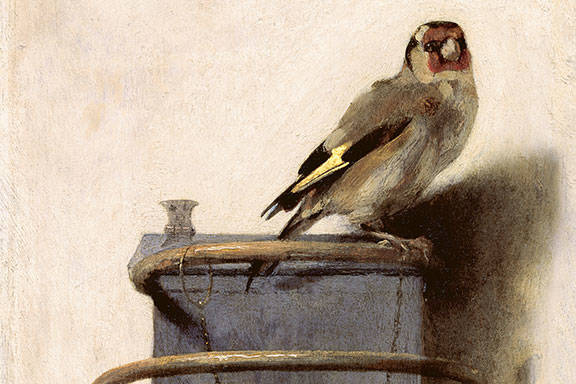The painting
The Goldfinch is one of the few works by Carel Fabritius to have survived. The painting is a touching portrait of a little bird standing against a white plastered wall. The bird sits on its feeder and is attached by way of a chain to its claw. The goldfinch is characterized by the red markings on its head and the bright yellow stripe on its black wing. Goldfinches, also known in Dutch as ‘water drawers’ (putters) were often kept as pets in the seventeenth century. They owe their nickname to the fact that they could be taught to draw water from a bowl with a bucket the size of a thimble. Fabritius’s exceptional depiction was probably intended as a trompe l’oeil, an optical illusion. It is possible that the painting was meant to be hung high up on a wall, as the goldfinch is depicted as seen from below. At first sight it must have looked like a real little bird.
The realisation of The Goldfinch, A bird’s eye view was made possible by principal partner NN Group.
Mauritshuis
The Mauritshuis is home to the best of Dutch Golden Age painting. The compact yet world-renowned collection is located in the heart of The Hague in The Netherlands, right next to the centre of government. Masterpieces such as Vermeer’s Girl with a Pearl Earring, The Anatomy Lesson of Dr. Nicolaes Tulp by Rembrandt, The Goldfinch by Fabritius and The Bull by Potter are on permanent display in the intimate rooms of this seventeenth-century monument. More than two hundred top works by Dutch and Flemish Old Masters are on display in this classic interior, that breathes a serene atmosphere of bygone days with its silken wall-coverings, sparkling chandeliers and monumental painted ceilings. Genre paintings by Jan Steen, landscapes by Jacob van Ruysdael, still lifes by Adriaen Coorte and portraits by Rubens offer a rich and varied representation of the painter’s art in the seventeenth century.


